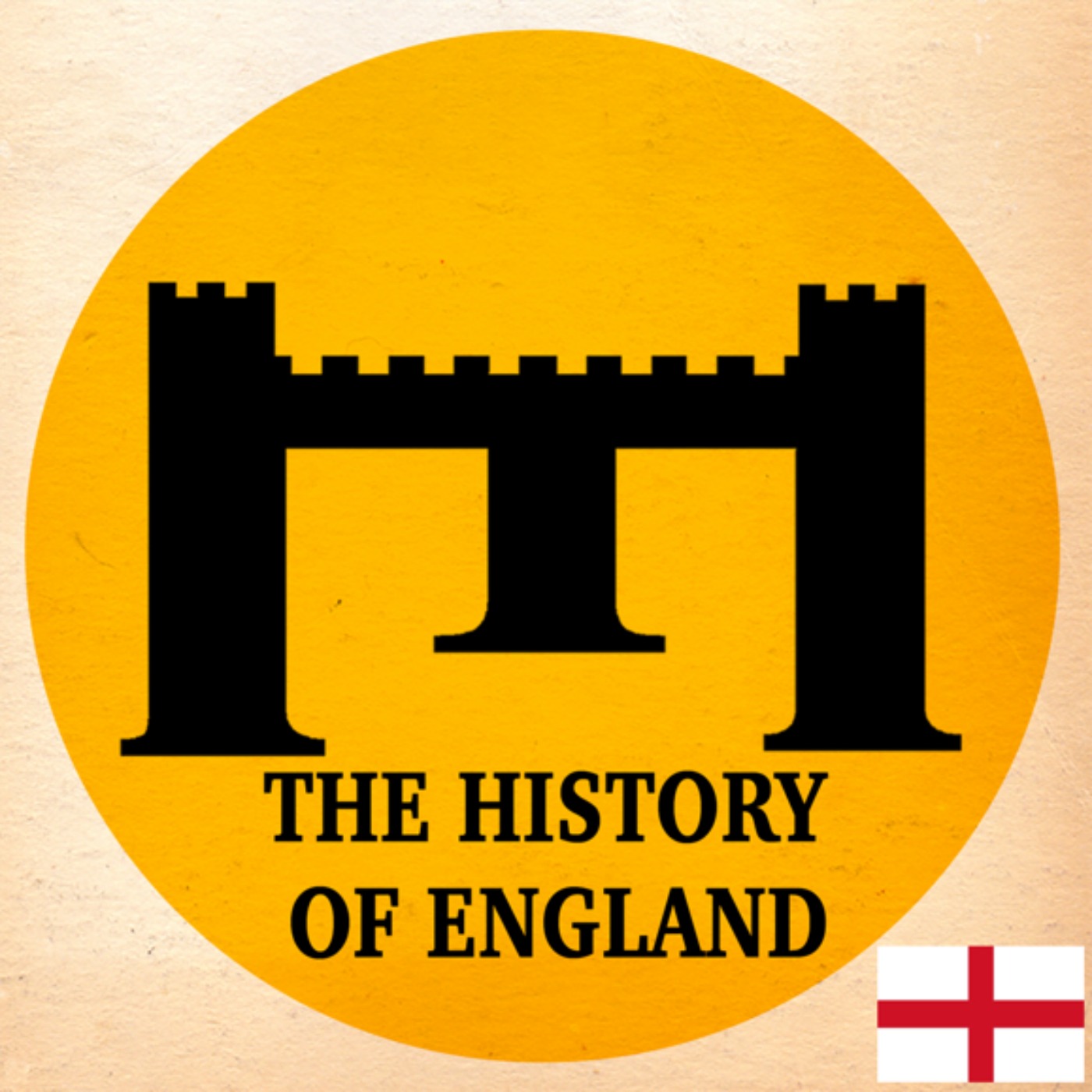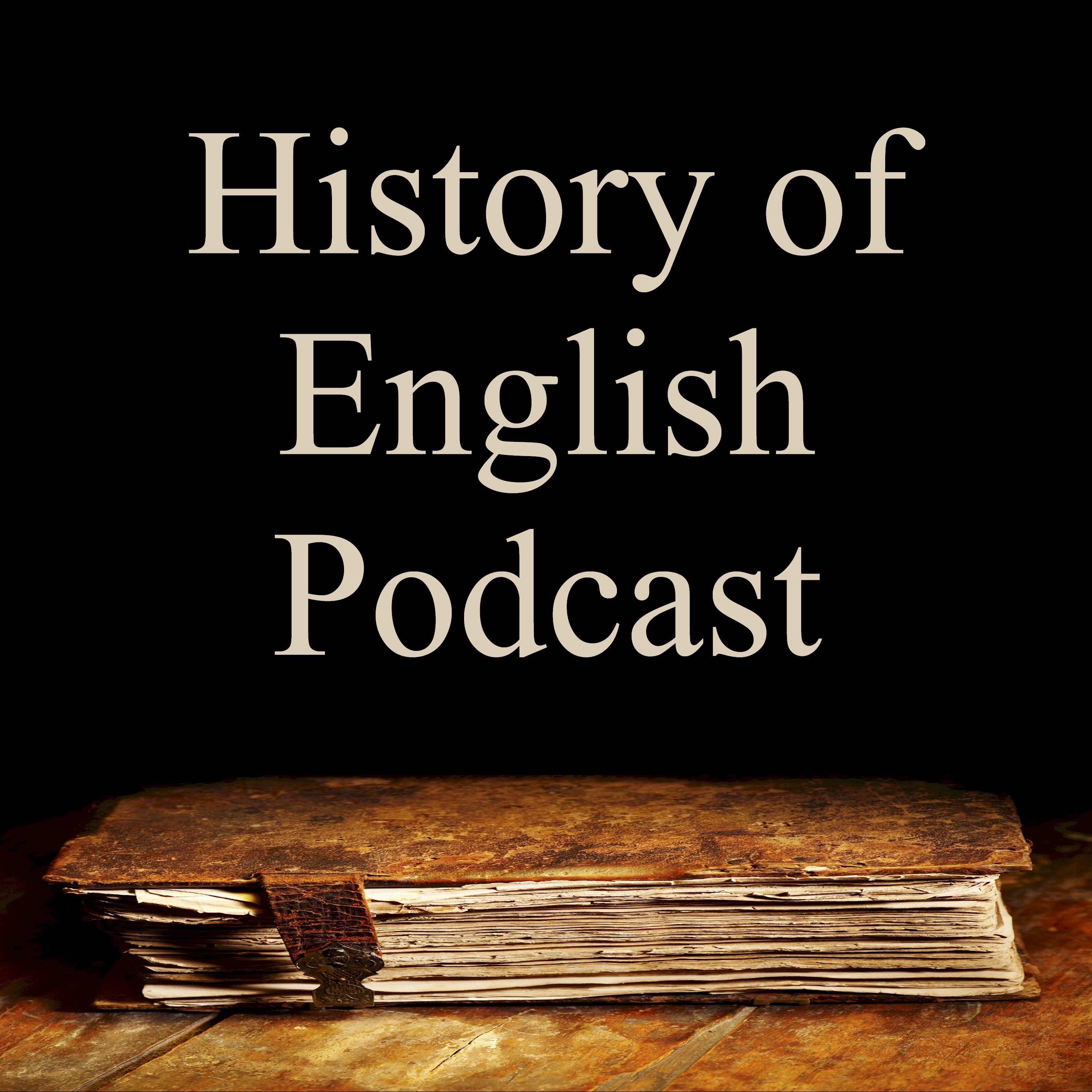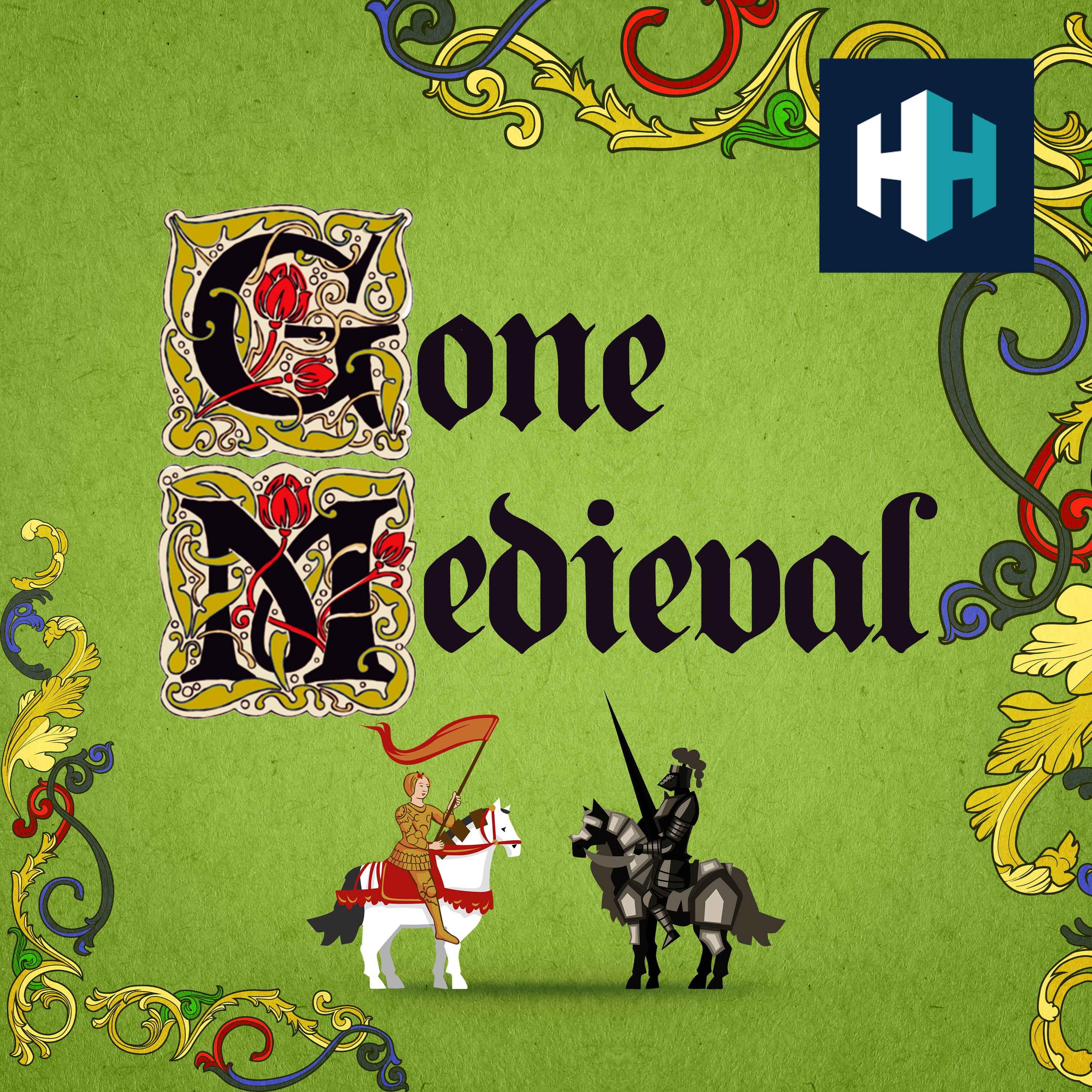
The Classic English Literature Podcast
The Classic English Literature Podcast
Happy 400th! Shakespeare's First Folio
Welcome to the Subcast! On today's bonus episode, I give a little poddie-training on perhaps the most significant publishing event in English literature: the presentation of the First Folio of Shakespeare's plays.
Wellness Thru ReadingGreetings and salutations book lovers. Welcome to Wellness Thru Reading. A podcast...
Listen on: Apple Podcasts Spotify
Please like, subscribe, and rate the podcast on Apple, Spotify, YouTube Music, or wherever you listen. Thank you!
Email: classicenglishliterature@gmail.com
Follow me on Instagram, Facebook, Tik Tok, and YouTube.
If you enjoy the show, please consider supporting it with a small donation. Click the "Support the Show" button. So grateful!
Podcast Theme Music: "Rejoice" by G.F. Handel, perf. The Advent Chamber Orchestra
Subcast Theme Music: "Sons of the Brave" by Thomas Bidgood, perf. The Band of the Irish Guards
Sound effects and incidental music: Freesounds.org
My thanks and appreciation to all the generous providers!
Hello, hello, hello, friends and neighbors! You’ve tuned into the Classic English Literature Subcast, the little bonus stream of the podcast where rhyme gets even more of its reason. Today’s show is a little different from most of the others as we’ll not really analyze any literature in particular. Rather, I wanted to do a little primer on a book – as opposed to a text. That is, I want to look at a special book, not for its literary devices, its use of language, its development of themes, etc., but instead as a material object, a historical artifact.
This episode is going out on November 30, 2023, and this month has marked the 400th anniversary of Shakespeare’s First Folio, the earliest compendium of his plays and a volume that has exerted an unmeasurable historical influence – certainly the most important secular book in western civilization. The First Folio is up there with Gutenberg’s Bible as one of the most significant objects in publishing.
Now, I know that at the end of our last full show – the one about Rosalind and Beatrice – I indicated that we would discuss Shakespeare’s Julius Caesar next. I slightly misspoke. I should have said our next regular episode would do that. So don’t get nervous, you’ve not missed anything. It’s just that I felt it my bounden duty to tip the hat to the First Folio on this, the occasion of its 400th birthday.
The term First Folio refers to a collection of 36 Shakespeare plays officially titled "Mr. William Shakespeare's Comedies, Histories, & Tragedies." John Heminges and Henry Condell, actors in Shakespeare’s theater company the King’s Men (so named for their royal patronage by James I of England) set out to collect and compile as many of Shakespeare's plays as they could. This must have been a logistical and bureaucratic nightmare. The rights to each play – and each variant of a play – would have to be secured from an army of printers, publishers, patrons, theaters, and on and on. They gathered manuscripts, promptbooks, and other sources to obtain authoritative copies of the plays, likely guided by the popularity and success of particular plays during Shakespeare's lifetime. Shakespeare had died seven years earlier, in 1616, and so the actor/editors surely considered their understanding of Shakespeare's intentions for which plays should be preserved and published. Of course, they also would have drawn on their personal knowledge of the playwright's preferences and artistic choices. Heminges and Condell worked on transcribing the plays, using the best available sources. They made editorial decisions and corrections, often relying on memory and the notes of other actors. Obviously, this process involved some editorial changes to the text.
But perhaps we should back up a bit. What actually is a folio, and what other published versions of the plays were in circulation?
Terms like "folio," "quarto," and "octavo" are used in the world of bookbinding and publishing to describe the size of a book. They refer to the way sheets of paper are folded to create a book of a particular size. These terms use the Latin numerical prefixes for the number of folds. For example, "quarto" comes from the Latin word for four, and "octavo" comes from the Latin word for eight.
Other terms include "duodecimo" (folded into twelve leaves), "16mo" (folded into sixteen leaves), and so on. They are not as current in modern publishing as bookmaking technologies have changed, but they were common when books were produced using large sheets of paper that were folded and trimmed to create the desired size.
- A folio-sized book is created by folding a sheet of paper in half once, resulting in two leaves or four pages. Each leaf is a single large page.
- A quarto-sized book is created by folding a sheet of paper in half twice, resulting in four leaves or eight pages. Each leaf produces four pages, and quarto-sized books are typically smaller than folio-sized books.
- An octavo-sized book is created by folding a sheet of paper in half three times, resulting in eight leaves or sixteen pages. Each leaf produces two pages, and octavo-sized books are smaller than both folio and quarto-sized books.
During the early modern period, including the Elizabethan and Jacobean eras (late 15th to early 17th centuries), many plays, especially those of William Shakespeare and his contemporaries, were originally published as quartos.
A play would be formatted in a quarto size to create a book approximately 9 by 12 inches, which allowed for a relatively small and portable book. Plays and other texts were often published individually rather than as part of a collected works to expedite publication and distribution of popular works. This format was a quicker and less expensive way to get, for our purposes, plays into the hands of the public.
- The downside, however, was that such a cheap method allowed for a good deal of what we would now call pirating: fly-by-night publishers would bang out usually inferior products to capitalize on a faddish market, and so issues of authorial consent or control were roundly ignored. The result? The quality and accuracy of the printed text varied widely –often hilariously –, and many unauthorized and incomplete versions of plays made their way into the public consciousness. Shakespearean works like Henry IV, part 1 and his narrative poem Venus and Adonis among others circulated in what bibliographer Alfred W. Pollard dubbed “bad quartos.” Perhaps the most famous of these is the first quarto version of Hamlet, entered in the Stationer's Register in 1602 and published the following year. For those of us familiar with the more authoritative second quarto of 1604 and the first folio of 1623 editions, the first quarto is sometimes laughably strange. The character Polonius is called Corambis and his servant is Montano, not Reynaldo. Gertrude is a bit more scheming against her husband Claudius and, most noticeably, the third soliloquy – the great “To be or not to be” – gets hacked to pieces (and moved to Act 2 instead of Act 3, by the by). Try this on for size:
To be, or not to be, Ay there's the point,
To Die, to sleep, is that all? Aye all:
No, to sleep, to dream, aye marry there it goes.
Imagine if that had been the only version of this most famous of all speeches which came down to us. I doubt that it would stir the hearts and minds of women and men across the globe and down the centuries. Incidentally, we used to think of this as an earlier version, but now we reckon that what we’ve got here is a pirated version: some bloke, sitting in the audience, furiously scribbling as much as he could pick up as the performance went on. Rather like a hippie sitting at a Grateful Dead show with a tape recorder in his weed bag. Generous scholars might call it memorial reconstruction, but it sounds like bootlegging to me.
Anyway, the point I’m making is that there were 19 Shakespeare plays, of various quality, kicking around before 1623 and so there were both artistic and financial reasons for the King’s Men to put out an authoritative edition of their writer’s corpus. A folio, with its monumental size, would lend credence to such authority, as well as do much to elevate the tone of the works contained therein. The actual paper used must come from France, as the quality of English paper was felt to be insufficient for a work intended as a memorial. But publishing a volume designed to impress was an expensive undertaking and Shakespeare does not seem to have provided any financial resources toward it in his will, though he did leave money to Heminges and Condell to purchase rings in his memory – perhaps some of that went toward publication.
But, as with so much else in Shakespeariana, the funding for the printing of the First Folio lacks extensive documentation, and uncertainty about the details abounds. Scholars estimate the per unit cost of printing at 6 shillings 8 pence. We generally believe that the main financial contributors were two noblemen and patrons of the arts: William Herbert, Earl of Pembroke, and his brother Philip Herbert.
A prefatory letter written by Heminges and Condell expresses gratitude to the Herberts for their support and patronage. It begins, “"To the most noble and incomparable paire of Brethren. William Earle of Pembroke, & Philip Earle of Montgomery, all honour and happinesse,” and goes on to suggest that the publication was made possible through their support of these patrons. Patronage, of course, was a common practice during this time, where writers, artists, and musicians often relied on the financial support of aristocrats or wealthy individuals to pursue their creative endeavors. The Herbert brothers were known supporters of the arts, and their patronage likely played a crucial role in financing the ambitious project of compiling and printing the First Folio.
Bookseller Edward Blount also probably staked a good deal of cash for the project and enlisted printer William Jaggard to do the work. Jaggard probably did not do much of the typesetting himself due to seriously declining health and we suppose that his son Isaac is the primary hand responsible for the folio’s actual production, supervising at least five different compositors whose peculiar orthographic quirks run throughout the book. As a historical curiosity, it seems that the Jaggard printing house had actually dabbled in a bit of the bootlegging I mentioned a moment ago with their somewhat questionable production of a book called The Passionate Pilgrim under Shakespeare’s name in 1599. Of the 20 poems collected in that volume, we now believe only five to be actually the work of Bill himself.
- An epistle addressed "To the Great Variety of Readers" follows the dedication to the Herberts. Also written by Heminges and Condell, it provides further context for the publication while addressing potential criticisms and defending the decision to compile and publish Shakespeare's plays, emphasizing their value and the need to preserve them. But most of all, the writers urge readers to buy the book: “Judge your six-pen'orth, your shillings worth, your five shillings worth at a time, or higher, so you rise to the just rates, and welcome. But, whatever you do, Buy. Censure will not drive a Trade, or make the Jacke go.”
- Ben Jonson, a contemporary and friend of Shakespeare, includes a poem in praise of Shakespeare in the prefatory material called “To the Memory of My Beloved, the Author William Shakespear.”. It’s wicked famous and gives us much of the hyperbole we still use to describe the Bard's genius. Famous lines include
- Soul of the age!
- The applause, delight, the wonder of our stage!
- Sweet Swan of Avon!
- He was not of an age, but for all time
and the mildly (I think) snarky: though thou hadst small Latin and less Greek.
And then we get the catalog of plays. Attentive listeners will have noted that I mentioned the Folio’s containing 36 plays and that, prior to its publication, 19 plays existed in quarto editions. Yes, so that means the First Folio is our only source for a number of the Bard’s works, such as Macbeth, Antony and Cleopatra, Julius Caesar, Taming of the Shrew, Measure for Measure, and on and on and on.
It is to the Folio, actually Heminges and Condell, that we owe our now familiar categories for the plays. Here, for the first time, do we get the plays grouped as tragedies, comedies, and histories. And this can mess with our critical heads a bit, because readers and students are so used to thinking of, say, Richard III as a history play that we frequently study it in relation to Shakespeare’s other history plays. But if we looked at the plays according to their date of composition, all of a sudden we can see fruitful comparisons, contrasts, and developments in Shakespeare’s writing across plays of a similar date, such as The Two Gentlemen of Verona, for instance.
And, of course, the frontispiece of the book presents us with the famous Droeshout Portrait of Shakespeare. It’s the most well-known of the portraits we have (like, if you imagine what he looked like, chances are your imagining the Droeshout portrait). It is an engraving on wood by Flemish artist Martin Droeshout (which one, we’re not sure. Apparently there were two). The engraving depicts Shakespeare in a relatively formal manner, wearing a high, rounded collar and a jacket. He has a receding hairline and a moustache, and he appears to be looking directly at the viewer. The Droeshout portrait is not detailed by modern standards, and has come in for quite a bit of stick for its rather crude and rudimentary work. But, we generally accept it as a generally accurate likeness and it remains an iconic representation of Shakespeare and is frequently reproduced in various forms: largely gift shop bric-a-brac. I believe I have a tea mug somewhere.
So, in November of 1623, the first folio edition of Shakespeare’s play made it to the shelves. Customer number one may well be a book collector and politician named Edward Dering (actually, he bought two in December of that year. At least he's a punter for which we have records. The book probably sold, unbound, for 15 shillings. A further 5 shillings would get a binding for you, which would be roughly 175 pounds, or 200 dollars today. Which is not a negligible amount to spend on a book. But of course this figure only accounts for general inflation, not buying power. 15 shillings might be the yearly wage of an average laborer (28,000 pounds is the average wage in 2023, if you’re curious). As of October of 2023, a first folio was offered at auction for $10.5 million. Reckon Edward Dering is sorry he went and died.
The initial print run of the First Folio was probably 750 copies. Of these, just over 230 remain, mostly in private collections or museums. The Folger Library in Washington, DC has nearly a third of them. Copies often go on tour – I saw one at Middlebury College a few years ago and it’s just wonderful being in the same room with a First Folio. I know it’s all psychological and sacralizing – you had to wait in line and then were escorted into a small, dim room. The book, under glass, lit like a shrine, open to Hamlet’s famous soliloquy – it’s all what art critic John Berger would call “The bogus religiosity which now surrounds original works of art.” But whatever – you’re in the presence of greatness, however corny that may seem. I don’t care. Before you is a collection of the most beautiful language, the most stirring characters, the most profound insights into human experience ever transmitted to posterity. And that transmission was an act of love by friends who gambled much on this great venture. Be as cool and sophisticated and detached as you want – I’ll be a fanboy and take the warm heartbeat of Shakespeare’s work every time.
Thanks for listening, everybody. I’ll catch you next time for Julius Caesar. And it’s a good thing the Folio came out, right? Because otherwise we’d have nothing to talk about in the next show. We’d all just be squirming there in an awkward silence. God bless you, Heminges and Condell!







